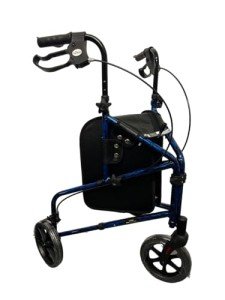In the pursuit of adaptability and ease, the modern walker has evolved from a fundamental mobility aid into a sophisticated device developed to enhance the quality of life for people with minimal mobility. Whether due to age, injury, or special needs, the requirement for effective mobility options is universal. This article will look into the attributes, benefits, developments, and considerations surrounding modern walkers, together with an often asked concerns (FAQ) section to answer common queries.

Conventional walkers, typically constructed from aluminum or steel, normally include a rectangle-shaped frame with four legs and no wheels. These fundamental designs supply stability however can be troublesome, requiring users to lift the gadget rather than push it. As an outcome, their use typically puts excessive strain on the upper body and reduces mobility effectiveness.
In the past few years, the design and performance of walkers have changed significantly. Modern walkers typically include features such as:
This evolutionary shift not only supports better mobility however also increases confidence, independence, and safety for users.
Modern walkers include a range of benefits for individuals seeking help in mobility. These benefits go beyond simple physical support, contributing favorably to mental and psychological health too.
Modern walkers empower users to browse their environment more freely. Functions such as wheels and lightweight designs facilitate ease of motion, enabling users to maintain autonomy in day-to-day activities.
The incorporation of safety features in modern walkers plays an essential function in avoiding falls and injuries. Anti-slip grips and bigger bases of assistance add to stability, therefore assuring users about their safety while walking.
Lots of modern walkers use multifunctional styles, acting as both a mobility aid and a storage service. With functions like built-in bags and trays, users can carry fundamentals and personal items, making getaways with these walkers easier.
Enhanced mobility can greatly impact a person's psychological health. Less reliance on caregivers and the capability to participate in social interactions can promote a sense of belonging and improved morale.
When picking a modern walker, various features must be considered to ensure it meets the user's needs optimally. Here, we provide a list of key considerations:
The market today offers a range of walker types customized to various needs. Below are some common choices:
| Walker Type | Secret Features | Best For |
|---|---|---|
| Standard Walker | Lightweight, no wheels | Maximum stability |
| Rolling Walker | Four wheels, often a seat | Increased mobility |
| Upright Walker | Promotes upright posture | Pain in the back reduction |
| Transportation Walker | Compact and lightweight | Caretakers and short ranges |
The best walker for seniors mostly depends on their physical condition and mobility levels. Lots of prefer rolling walkers due to their ease of use, while those with greater stability requirements may benefit from standard walkers.
To ensure a proper fit, stand inside the walker with your arms hanging conveniently at your sides. Your elbows ought to be a little bent when holding the walker manages. Change the height up until it lines up perfectly.
Yes, lots of modern walkers are designed to fold for easy transport. Models such as transportation walkers are particularly lightweight and compact, making them ideal for travel.
Many insurance plans, consisting of Medicare and Medicaid, may cover the expense of walkers when recommended by a doctor. It is suggested to verify coverage details with your insurance provider.
Regular checks need to be carried out for any loose screws, frame integrity, and wheel functionality. Tidy the walker regularly to maintain hygiene and curb wear.
The modern Walker - daiqz.com, represents a significant advancement in mobility aids, boosting the independence and self-confidence of users. With numerous types, functions, and considerations available, selecting the ideal walker can greatly improve mobility and total quality of life. Comprehending these tools empowers users, caregivers, and health care experts alike to foster an encouraging, active community for those needing support in mobility. The modern walker is not just a device; it is a bridge to liberty and self-reliance.
No Data Found!
